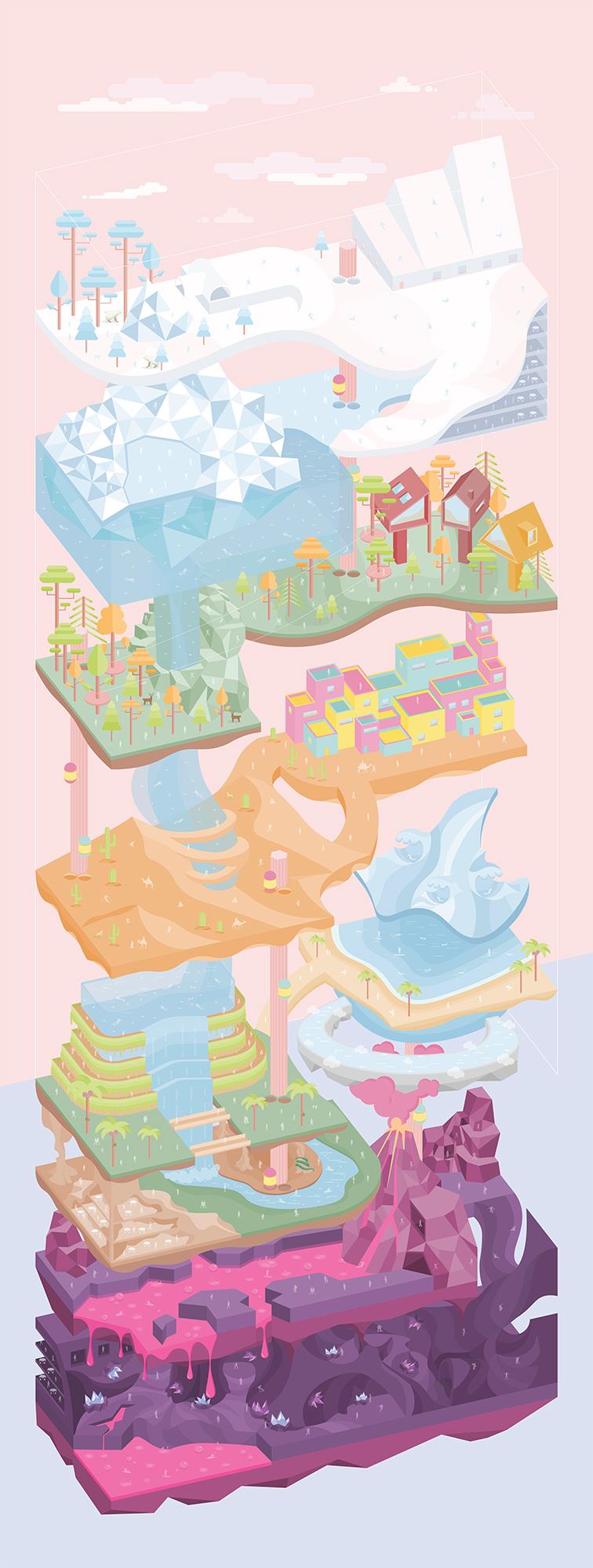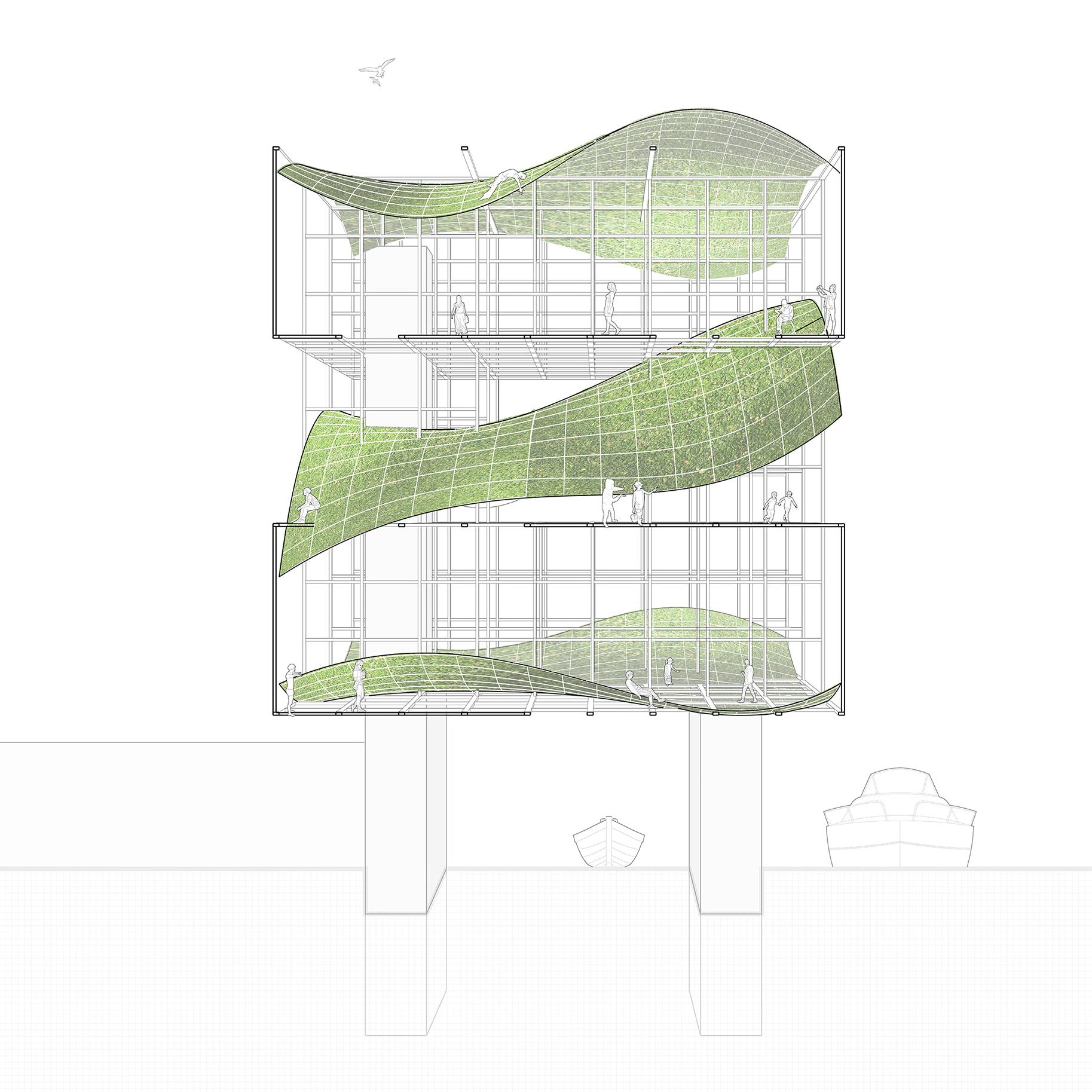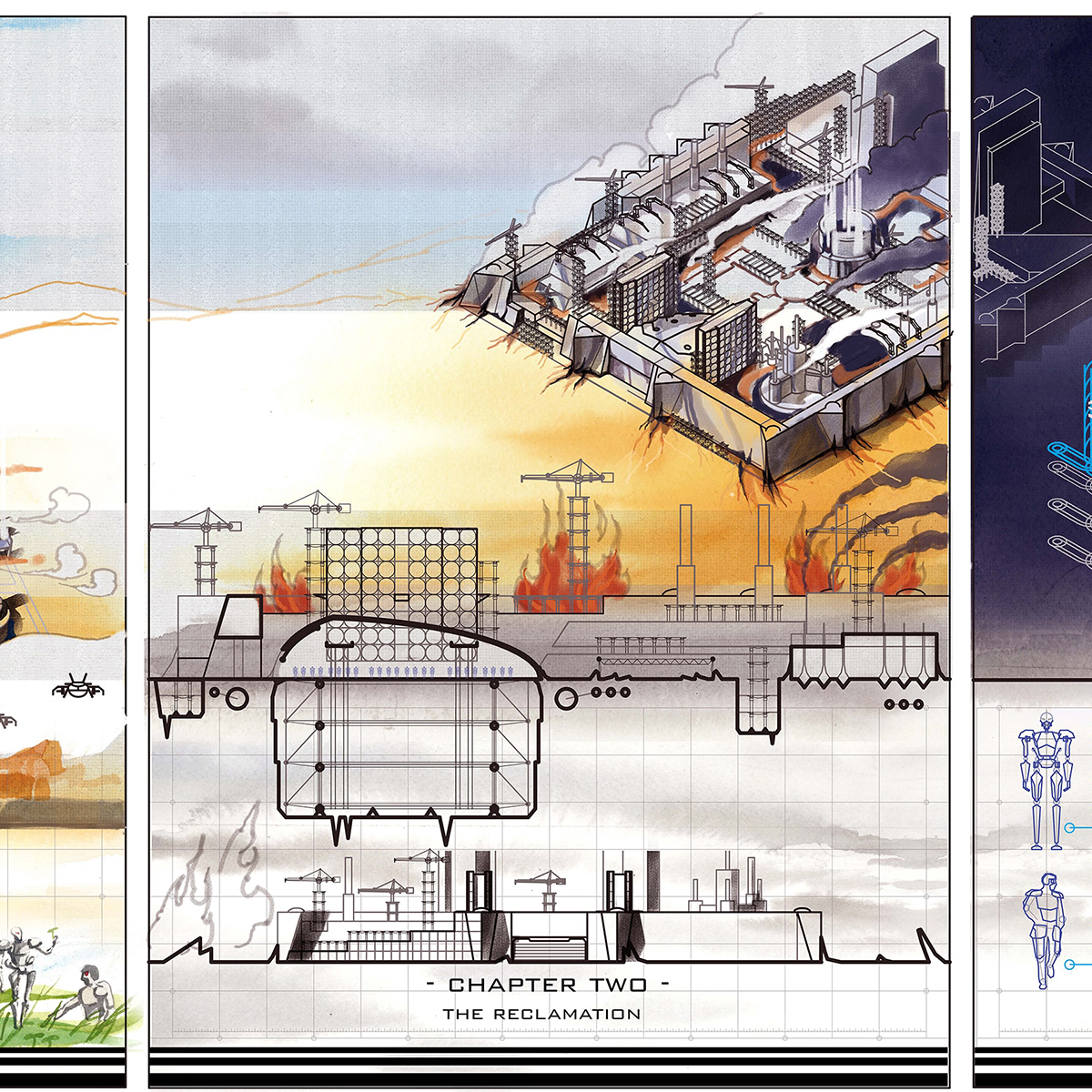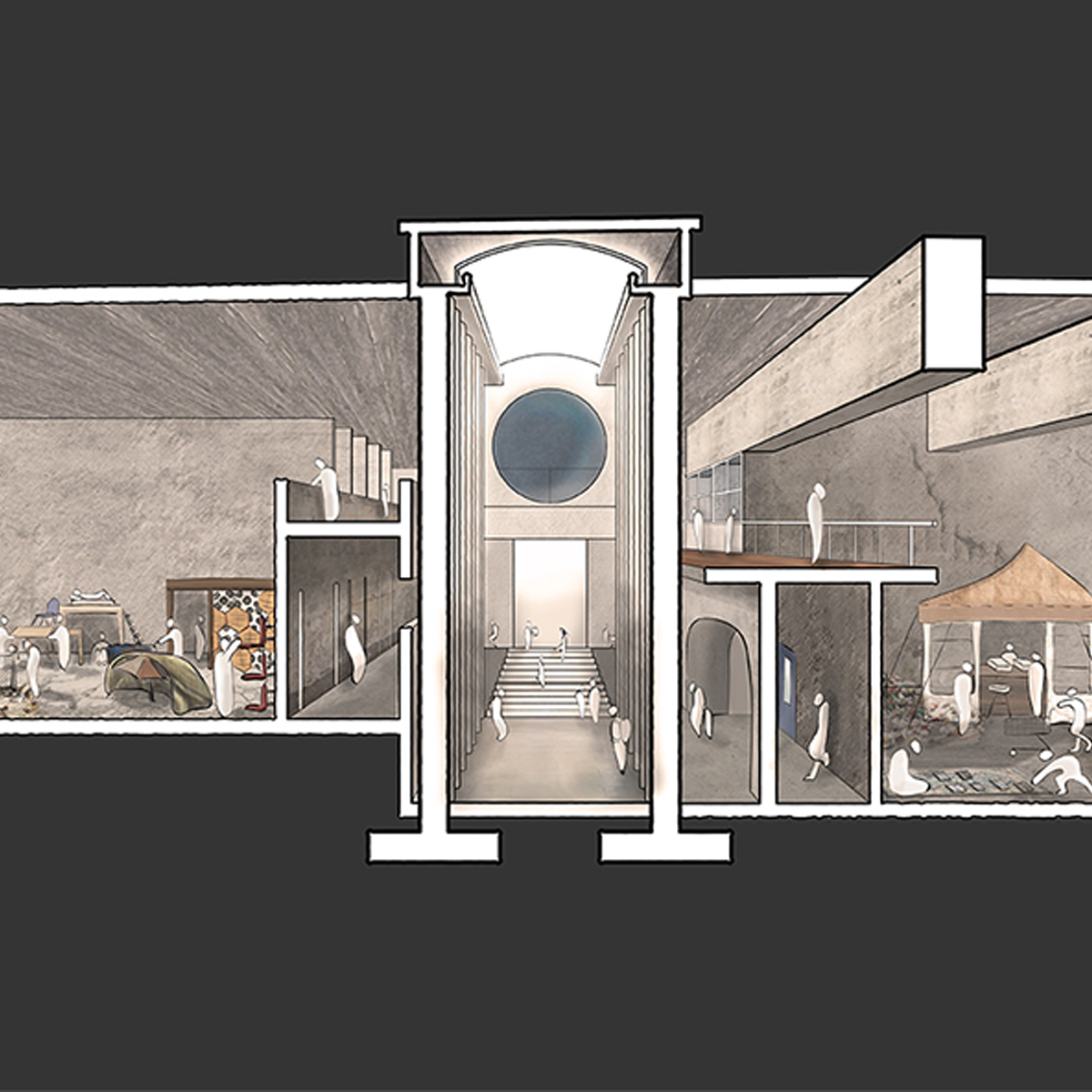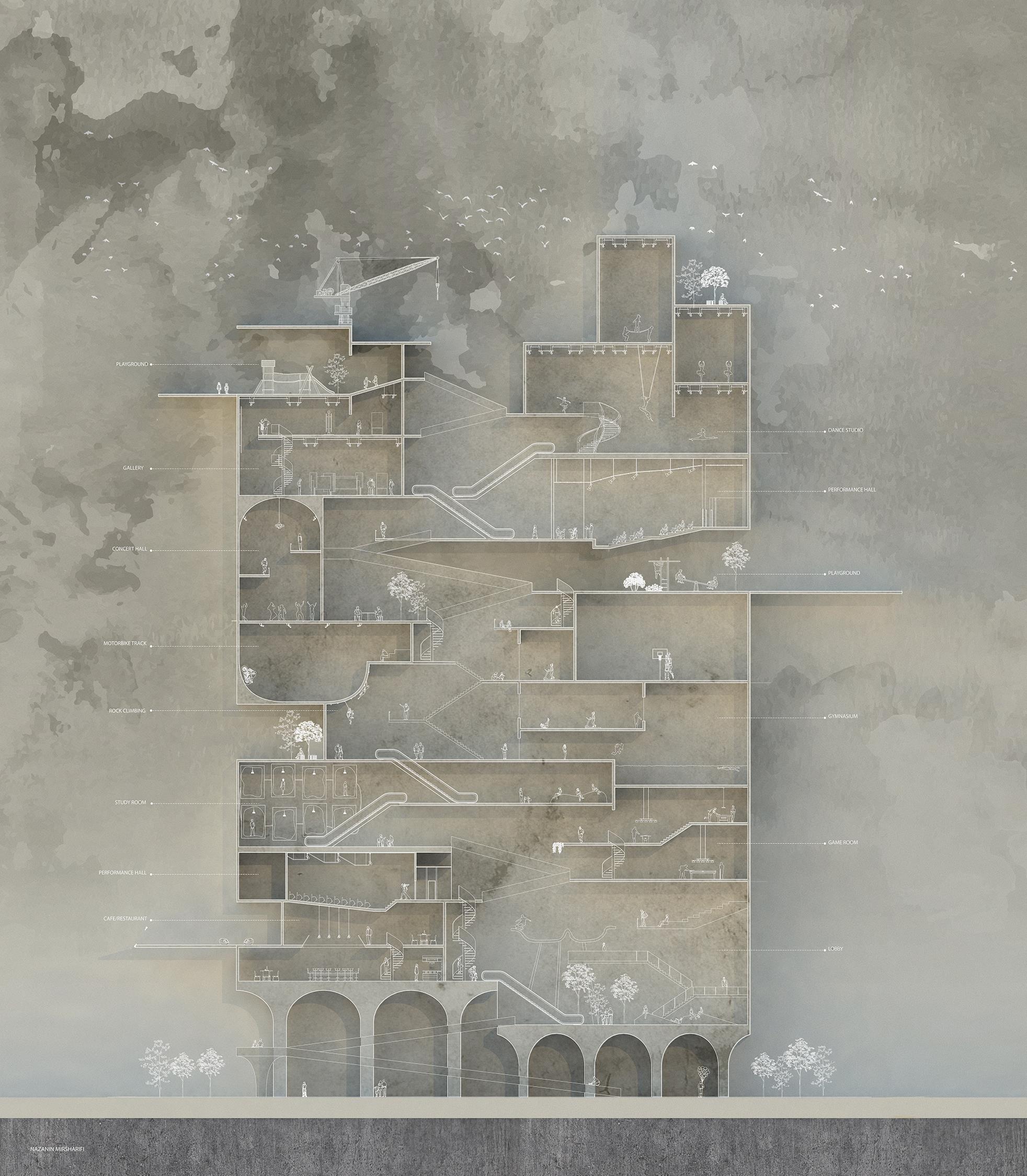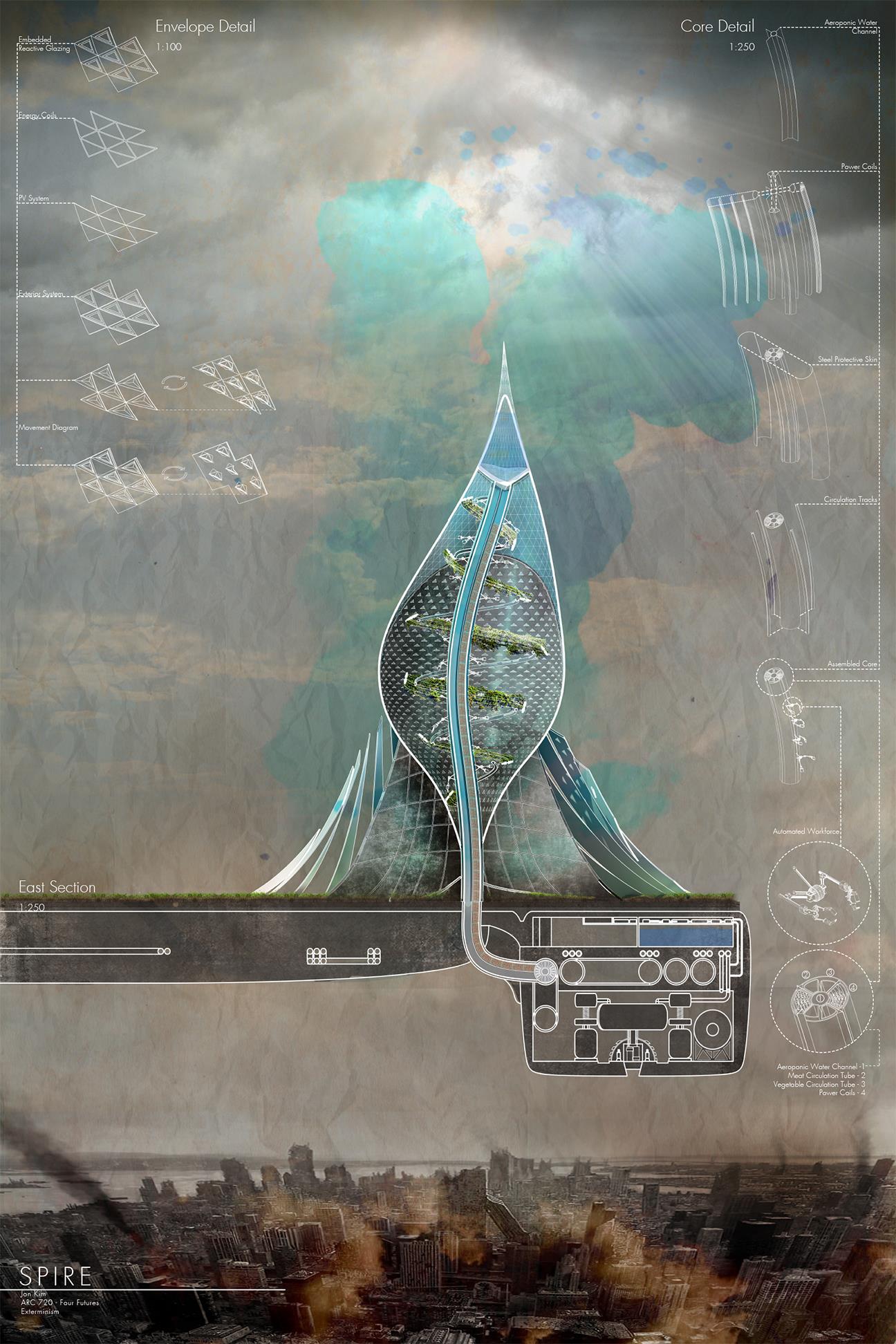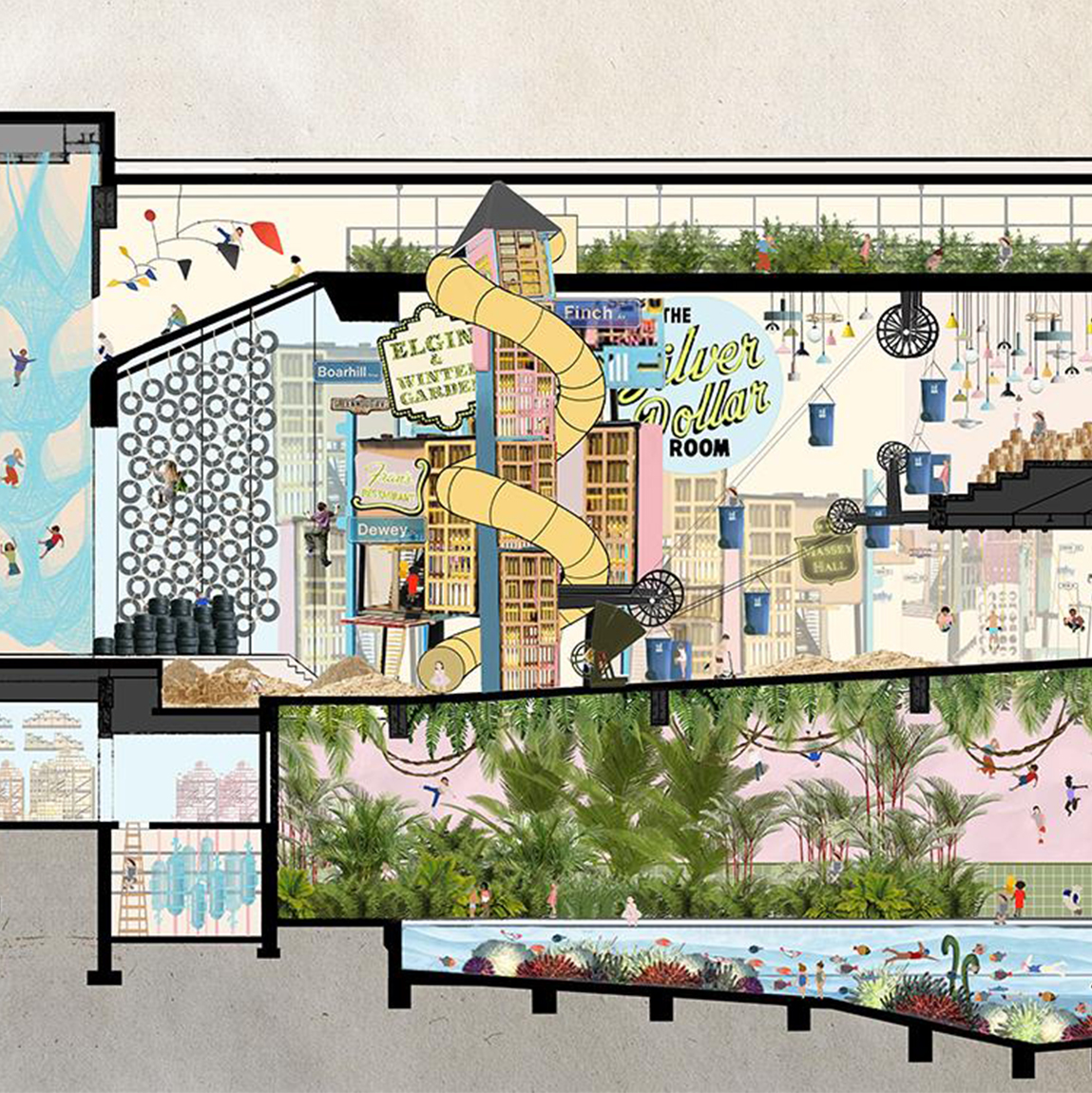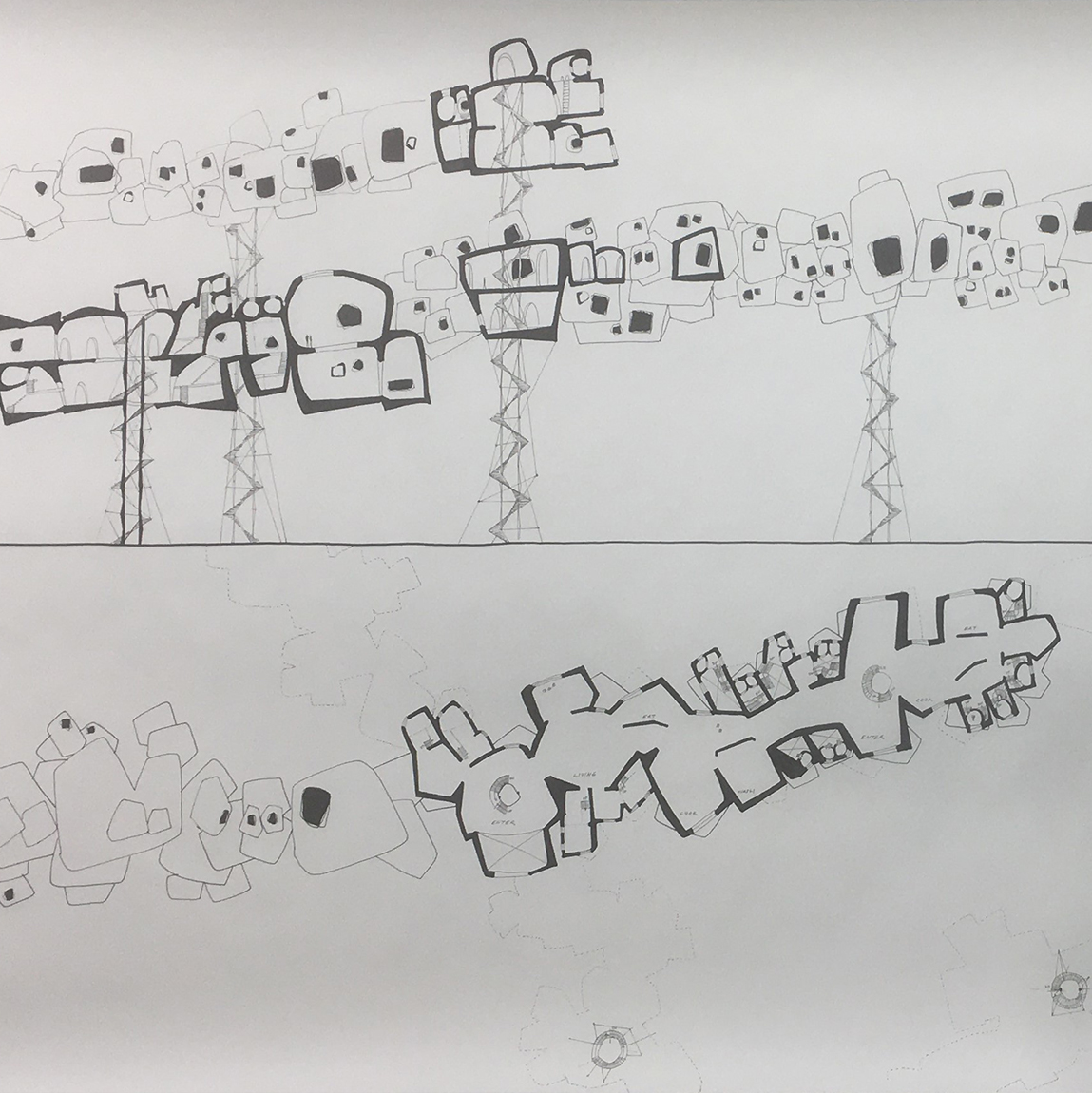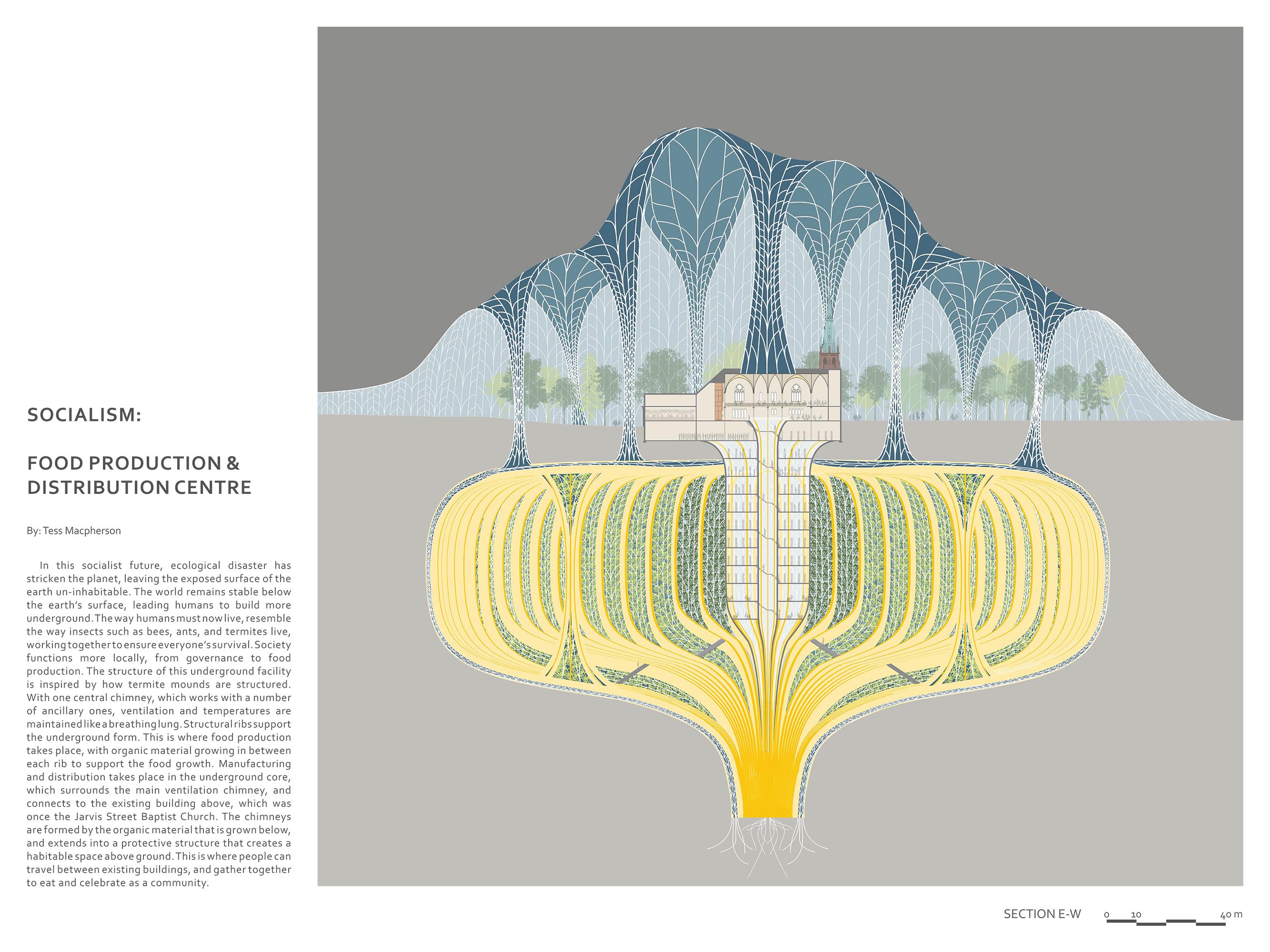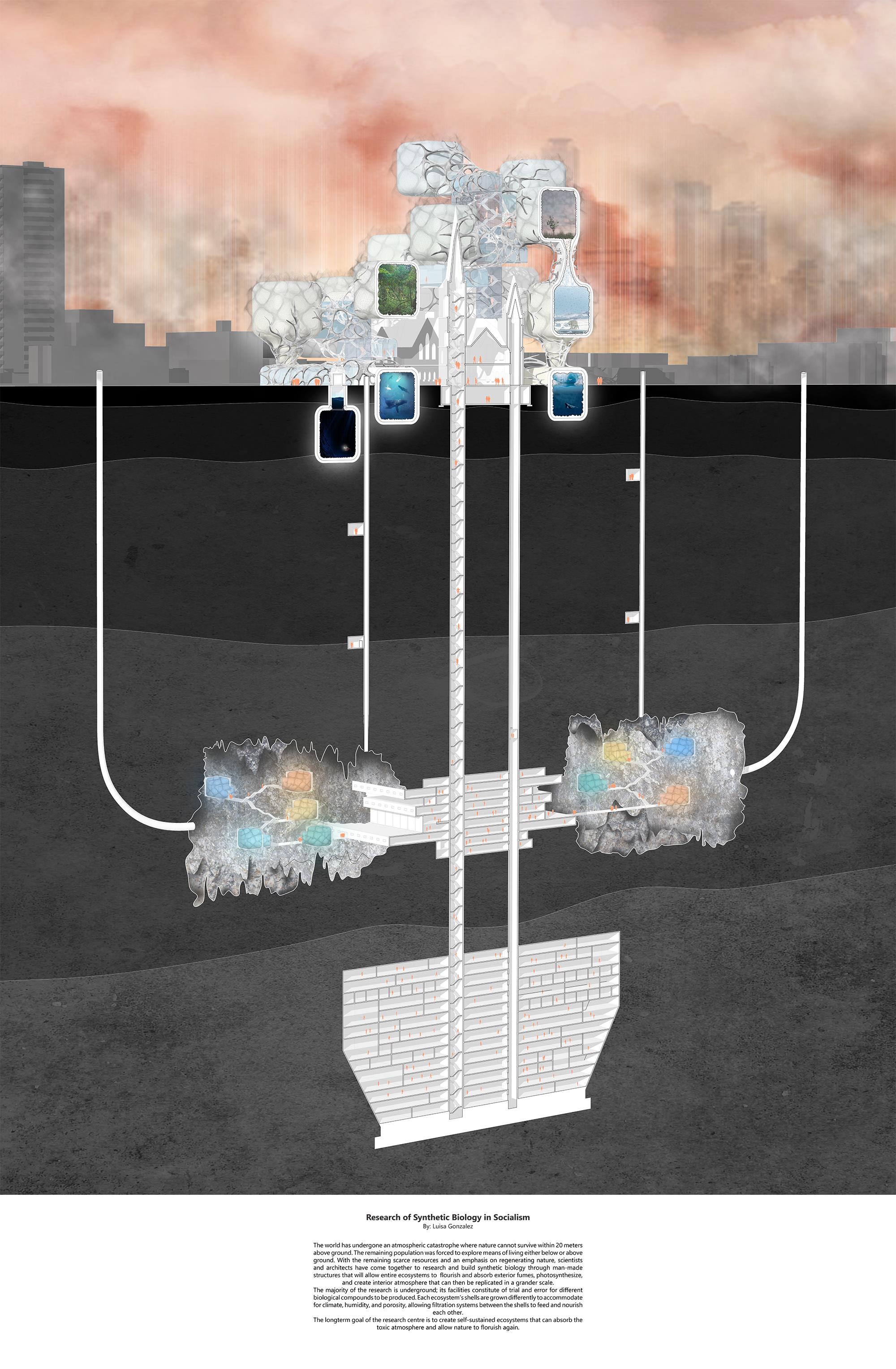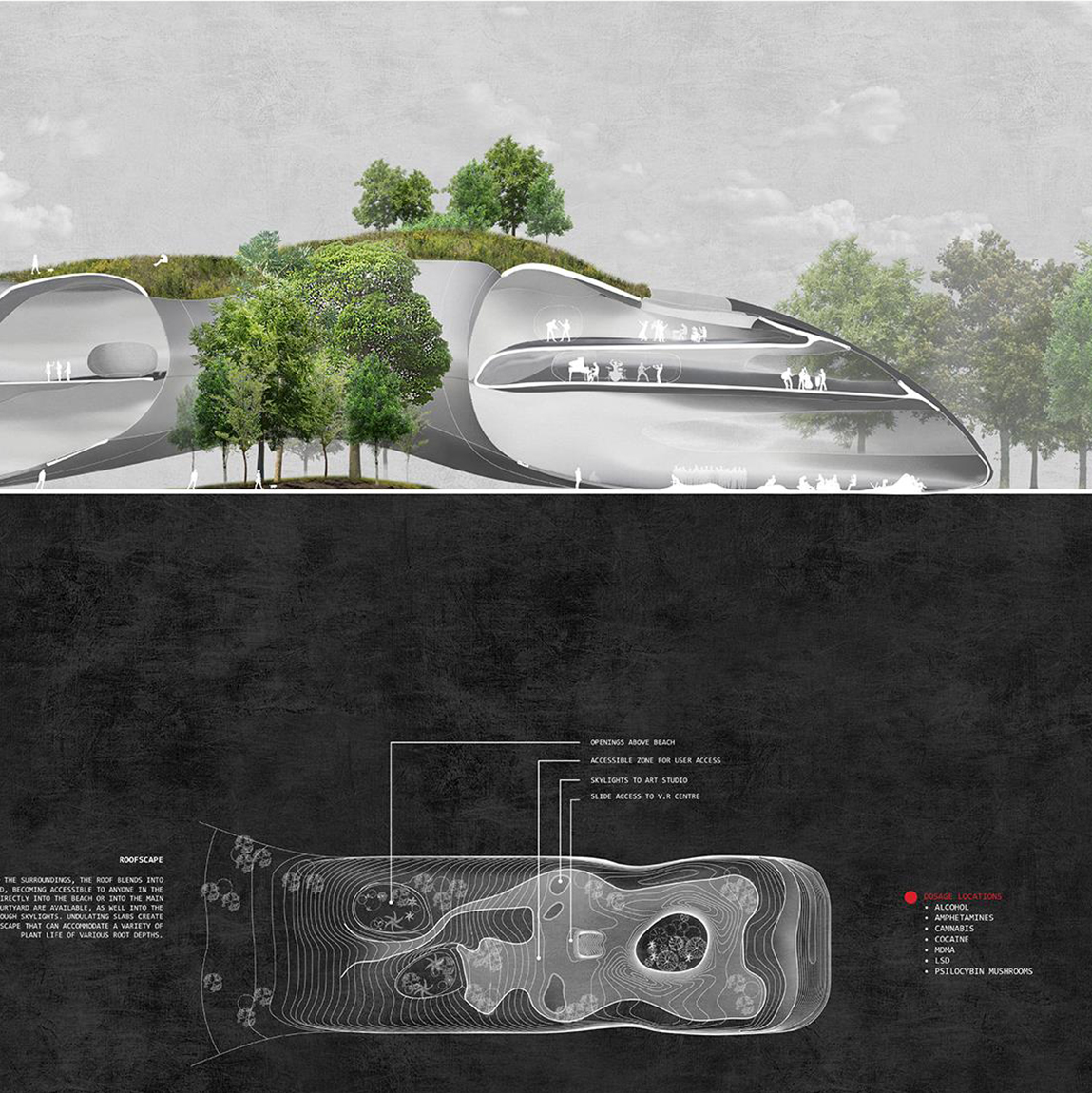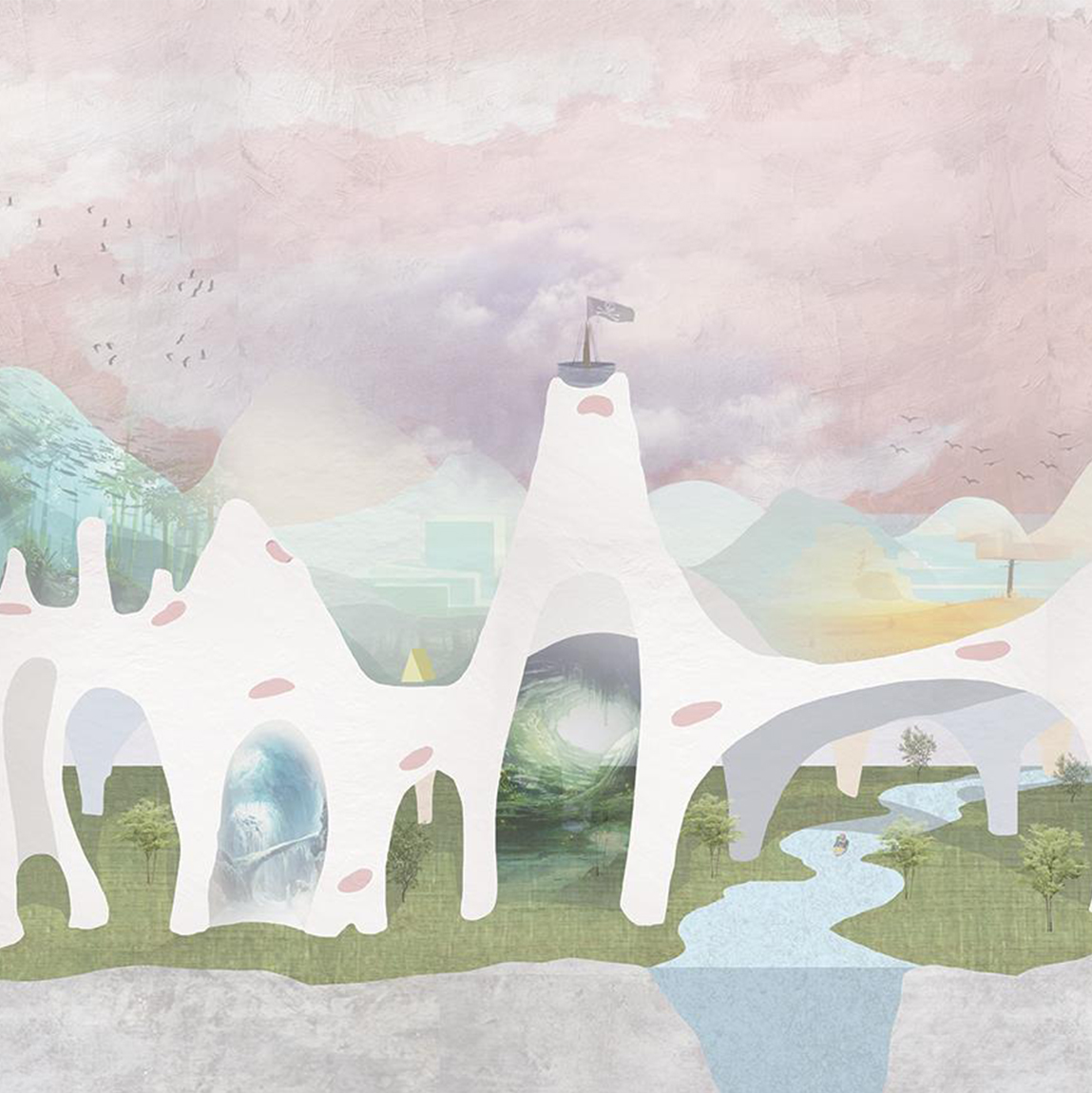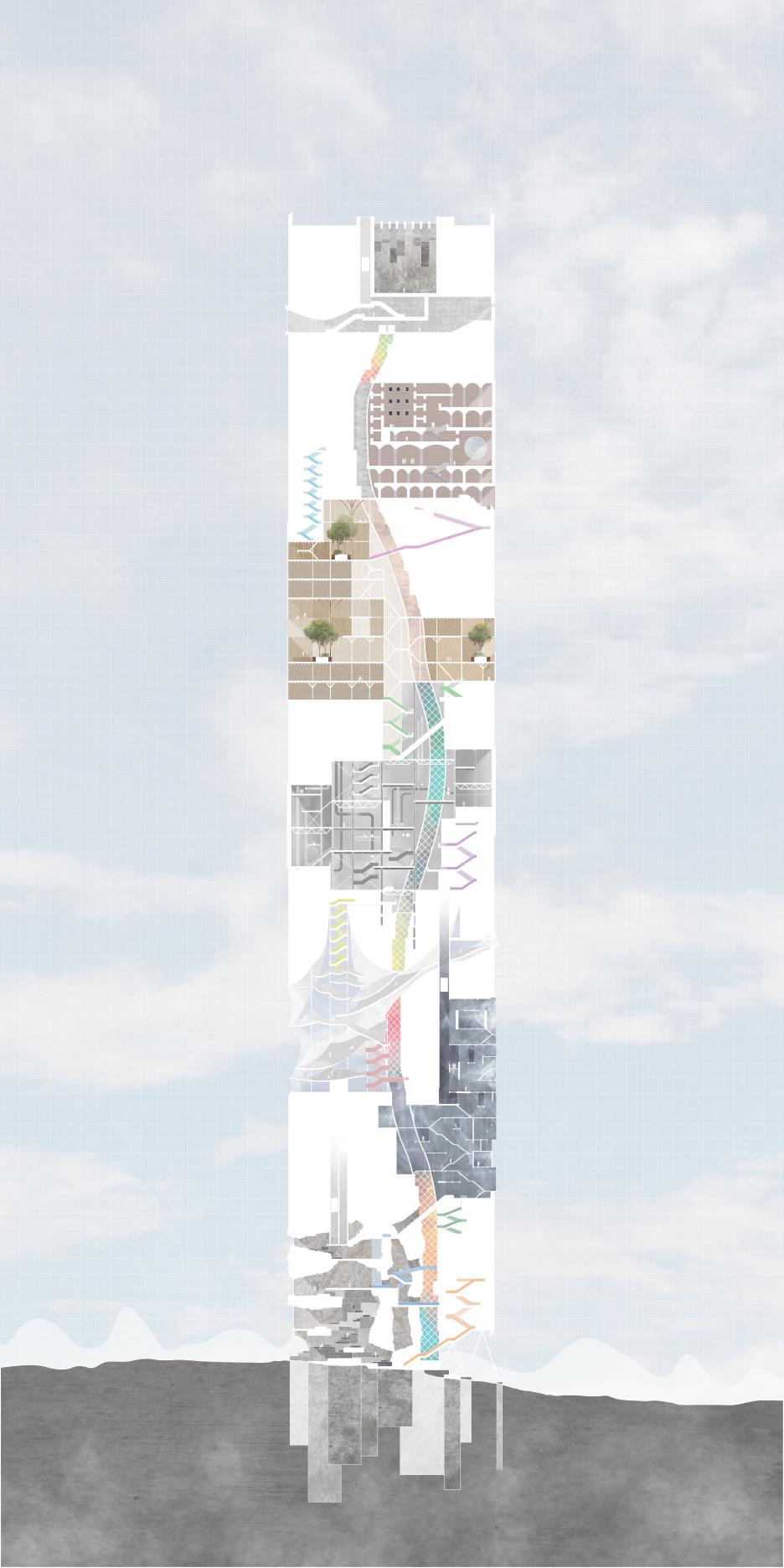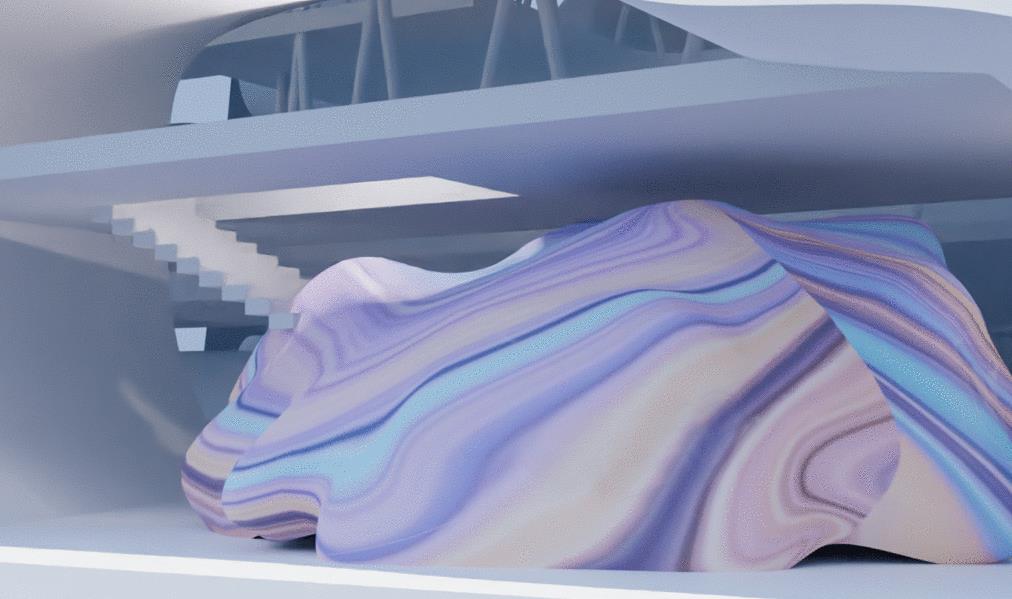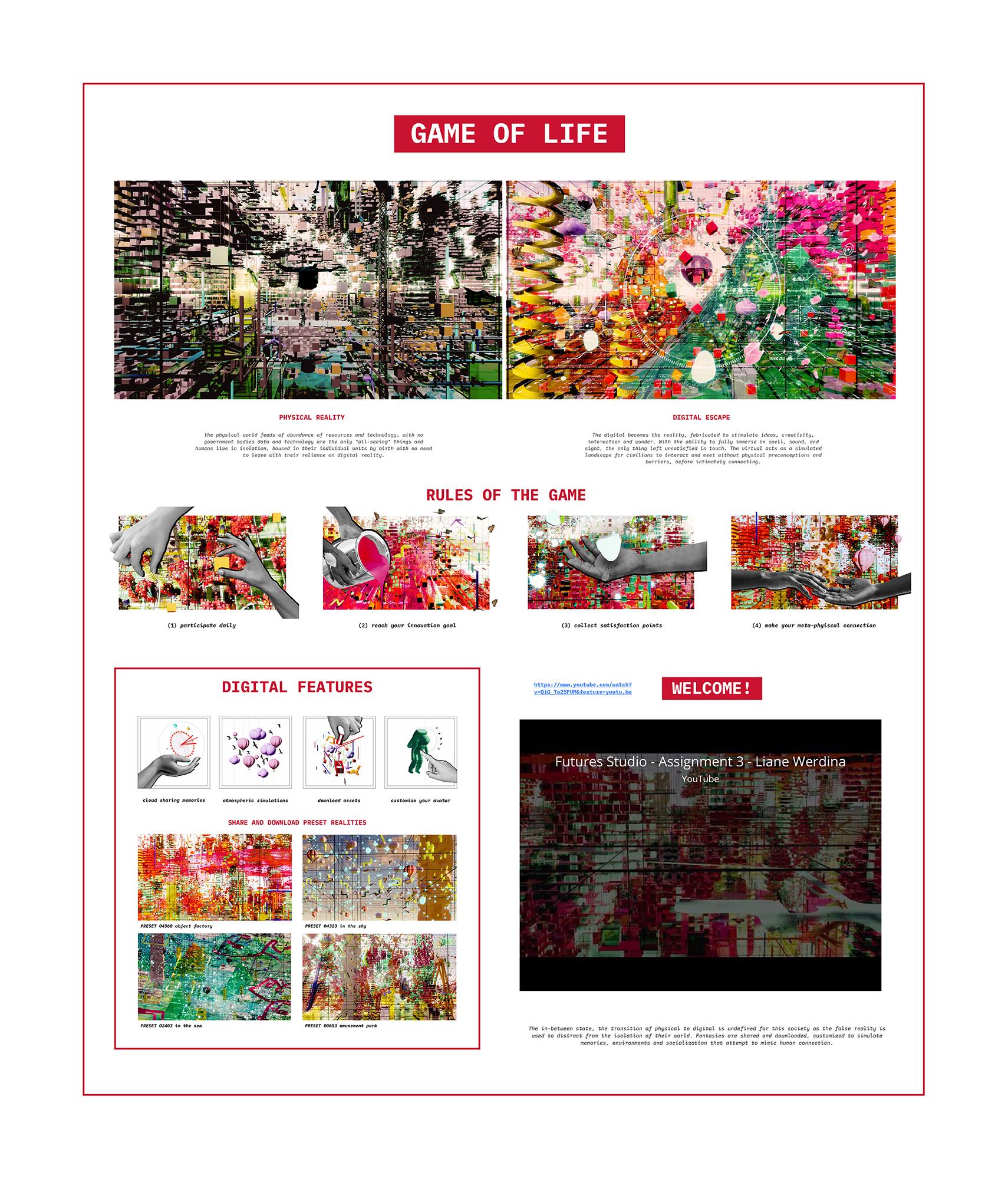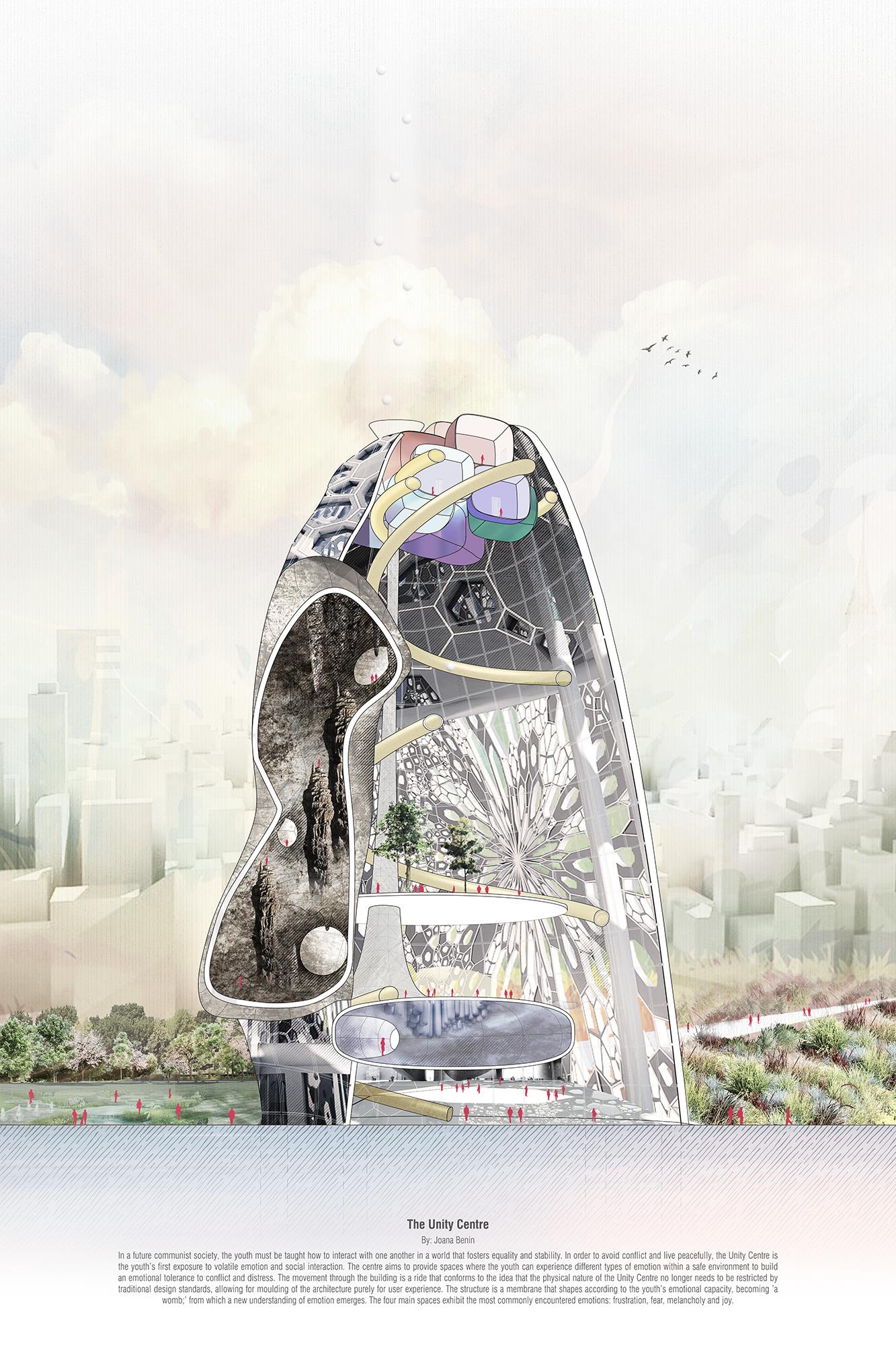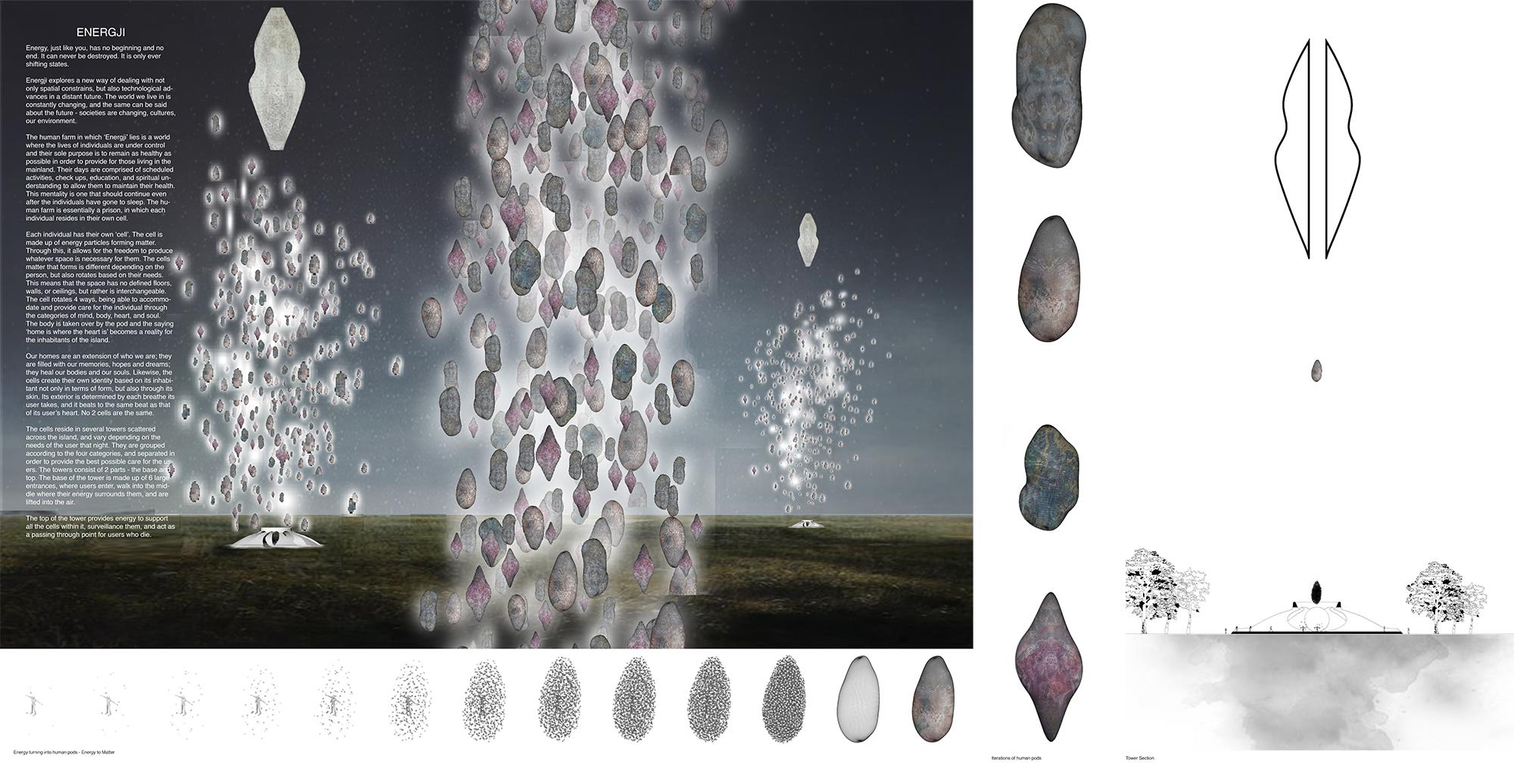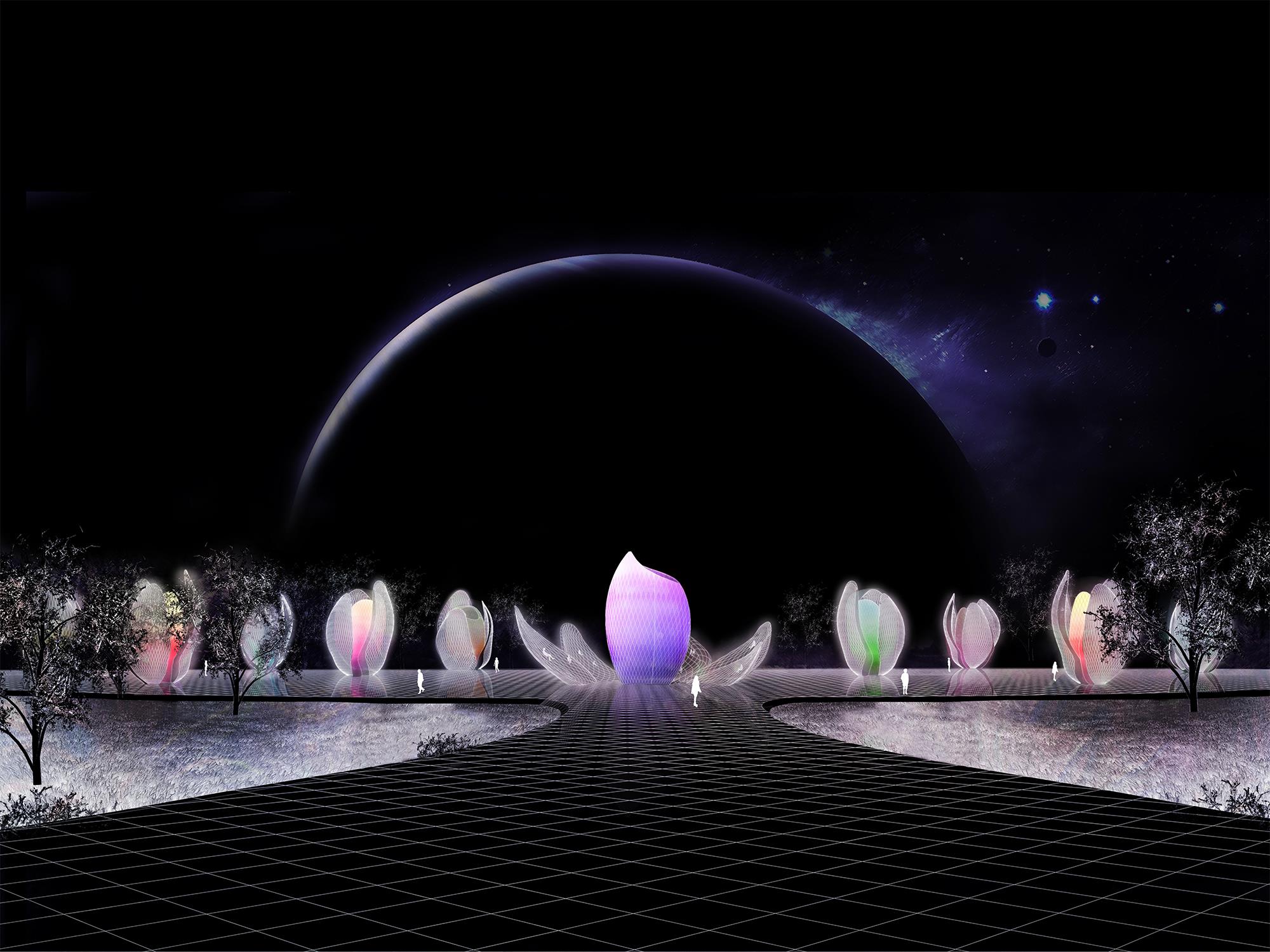In a postscarcity, communist society of equality and abundance, there is no distinction between what counts as work and what counts as leisure activity. Work isn’t really work anymore, it is what you choose to do with your free time, such as pursuing one’s hobbies; “From each according to his ability, to each according to his needs”.
In the growth institution, children come to the recreation centre to learn and improve on their hobbies and sports. The hobbies the children learn from this centre may be further pursued in this communist society once graduated.
The tall glazed tower simulates five major global climates: tropical, dry, temperate, cold, and polar. As users go up in altitude, the building will imitate its temperatures, humidity, air pressure, and wind patterns.
Each level and landscape in this facility is programmatically shaped to take on the geographical characteristics of its climate. Each climate also has its own building material preferences, for example, in the tropical climate, there is an organically shaped structure made of bamboo, whereas in the cold climate, there is a geometrical shaped structure made from slabs of ice. An invisible magnetic forcefield separates each landscape from one another, therefore the climate of one region cannot interfere with the climate of another region.
Tropical Region
The first, second, and lower level one, two, and three, are based on the hot and humid tropical landscape. As users first enter the building, they walk into the jungle, where they go gardening, fishing, scuba diving, kayaking, etc. The level connected to the jungle is the beach, where they can take on various types of watersports, such as surfing and paddle boarding. In addition to the beach, there is also a hot spring, that takes the heat generated from the volcano, to heat up the water.
As they go below the earth, it is much darker, with materials that make up a cave-like landscape, such as limestone and gypsum rock. Lower level two is where an active volcano takes place. Users can kayak, surf, or swim on the lava as it flows from the erupting volcano. They could also hike and rock climb. The lowest level is nearest to the earths core. This is where users can dig, chisel, and drill the surrounding landscape to find gemstones, crystals, and diamonds that form. With its free-flowing shapes, users may discover that skateboarding or rollerblading is suitable here as well.
Dry Region
The third level is based on a desert landscape that can mimic its hot and dry climate. With the abundance of sand, users can go sand surfing, camel riding, skiing, quad biking, etc. Connected to the desert, on the fourth level, is complex of Mexican style homes painted in bright colours and made from
adobe clay; a material frequently used to build homes in dry climates. These homes provide enclosed spaces for users to take on more laid-back hobbies, such as knitting or cooking.
Temperate Region
The fifth level is based on a mixed forest landscape that mimics mild summers and winters. This forest contains both deciduous and coniferous trees, that change colours depending on the season it simulates. Amongst the landscape are cabins made from wood, elevated to provide views of its surroundings. Users can go ziplining, hiking, camping, wildlife watching, etc.
Cold & Polar Region
The sixth and seventh levels are based on a cold and snowy arctic landscape. The sixth level uses ice as the main material for its construction. There is a rink where users can skate or play ice hockey on, that leads into an ice structure where users can go ice climbing. This geometrical shaped structure is made from slabs of ice to best represent its rigid nature. The highest floor is where users can participate in winter sports, including skiing, snowboarding, sledding, snowmobiling, etc.
Why a glazed tower?
The reason that this building is a simple, tall, rectangular glazed tower is to showcase the architecture of the building inside, which are the separate levels that create a larger whole. As the architect, I want a large, open space, where users can clearly understand and pinpoint which space they would like to explore. This provides transparency for everyone inside and outside the building. Also, since this is such a tall building, I didn’t want a dense and heavy structure on the site; I wanted it to be light, and full of open space for activities.
Hobbies & Sports
Since I am only the architect of this building, it is not my position to say which structures the children must use for their hobbies. In the end, it’s up to the children to decide which hobbies interest them and which region they choose to explore their hobby with. As the architect, I based the form of the structures and landscapes on my personal judgement on how I perceive a material type can be shaped and can accommodate a certain hobby. However, since the children in the institution do not know what a hobby is, and how, for example, a surfboard should be used at the beach, they can experiment through trail and error, and through learning from their peers.
The activities that the children partake in will not only physically benefit them, but will also help nurture their creativity, imagination, and critical thinking; essential in child development.
The power is in letting them use their imagination to choose their own hobbies, or create new ones, from the various built landscapes and equipment inventory; the opportunities are endless.
![]()
